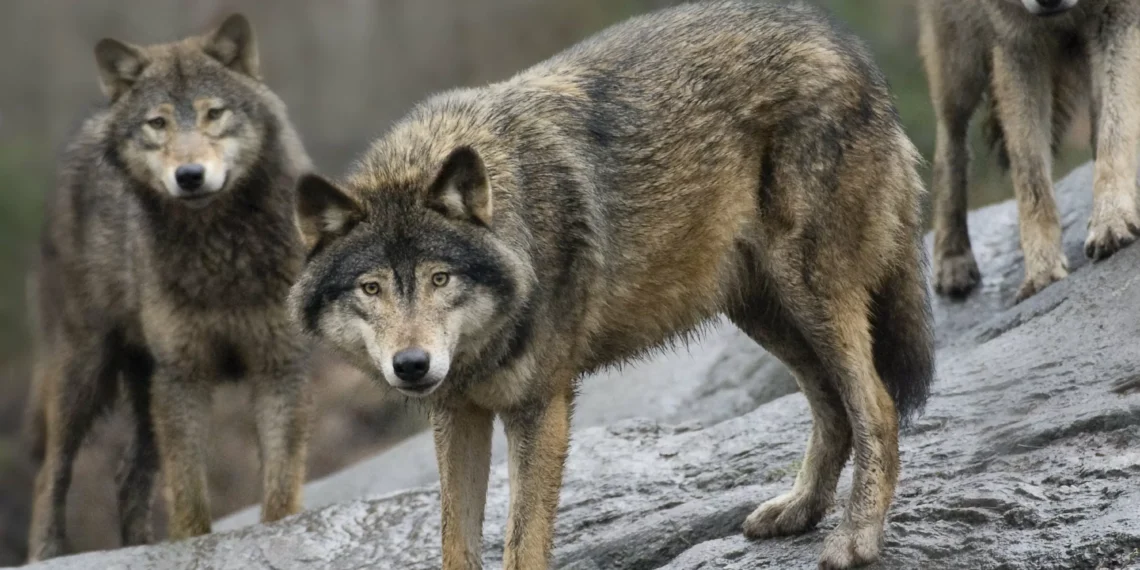The European Union has long been known for its commitment to protecting the natural environment and its diverse wildlife. However, in recent years, the continent has seen a significant increase in the population of wolves, leading to a clash between farmers and conservationists. In response to this issue, the EU is now considering backing plans to remove some of its protections for wolves, sparking a heated debate among various stakeholders.
The debate over the protection of wolves has been ongoing for years, with farmers arguing that the growing wolf population poses a threat to their livestock and livelihoods. On the other hand, conservationists argue that wolves play a crucial role in maintaining the balance of ecosystems and should be protected at all costs. This clash of interests has put the EU in a difficult position, but it is now taking steps to find a solution that satisfies both sides.
The European Commission, the executive branch of the EU, has proposed a new plan that would allow member states to manage their wolf populations more flexibly. This means that countries with a high number of wolves would have the option to implement measures such as culling or relocation to control their numbers. The proposal also includes measures to compensate farmers for any losses caused by wolves and to promote coexistence between wolves and humans.
This move by the EU has been met with mixed reactions. Some have welcomed the proposal as a step in the right direction, while others have criticized it for not going far enough. However, one thing is clear – the EU is taking a proactive approach to address the issue and find a balance between the needs of farmers and the protection of wolves.
One of the main reasons for the EU’s decision to back plans for the management of wolf populations is the significant increase in their numbers. According to the latest estimates, there are now over 12,000 wolves in Europe, a significant increase from just a few hundred in the 1970s. This growth in population is mainly due to conservation efforts and the implementation of strict protection laws. While this is undoubtedly a success story for conservation, it has also led to an increase in conflicts with farmers.
The EU’s proposal is not only aimed at addressing the concerns of farmers but also at ensuring the long-term survival of wolves in Europe. By allowing member states to manage their wolf populations, the EU is acknowledging that different regions may have different needs and challenges when it comes to coexisting with wolves. This approach will also allow for a more targeted and effective management of wolf populations, rather than a one-size-fits-all approach.
Furthermore, the EU’s plan also includes measures to promote coexistence between wolves and humans. This includes providing financial support for the implementation of preventative measures, such as electric fences and guard dogs, to protect livestock from wolf attacks. The EU also plans to invest in research and education programs to help farmers better understand wolves and learn how to coexist with them.
It is essential to note that the EU’s proposal does not mean that wolves will lose all their protections. Wolves will still be a protected species under the EU’s Habitats Directive, and any management measures will have to be carried out in a sustainable and responsible manner. The EU also plans to closely monitor the implementation of these measures to ensure that they are not detrimental to the long-term survival of wolves.
In conclusion, the European Union’s decision to back plans for the management of wolf populations is a positive step towards finding a balance between the needs of farmers and the protection of wolves. The EU’s approach is a testament to its commitment to protecting the environment and its diverse wildlife. By promoting coexistence and providing support for both farmers and wolves, the EU is paving the way for a sustainable future where humans and wolves can peacefully coexist. Let us hope that this decision will lead to a harmonious resolution to the ongoing clash between farmers and conservationists, and ultimately, the long-term survival of wolves in Europe.







